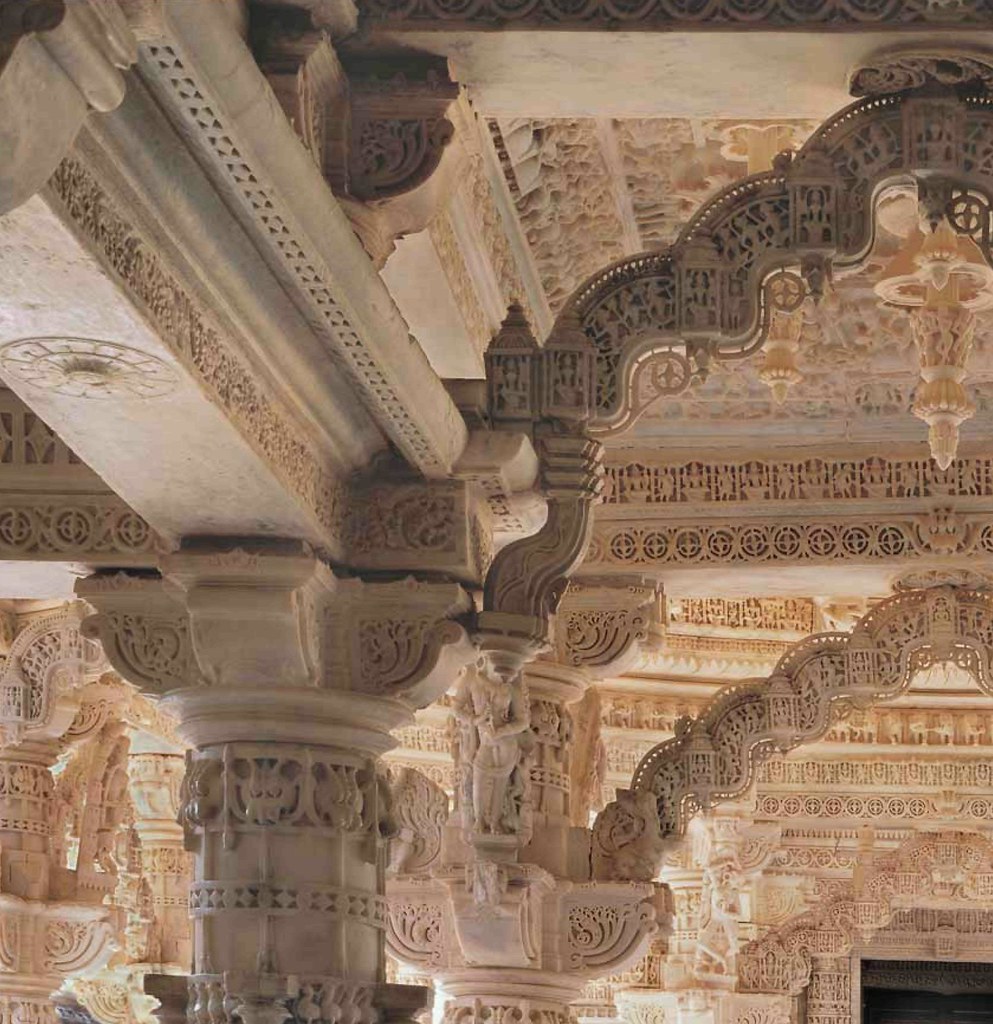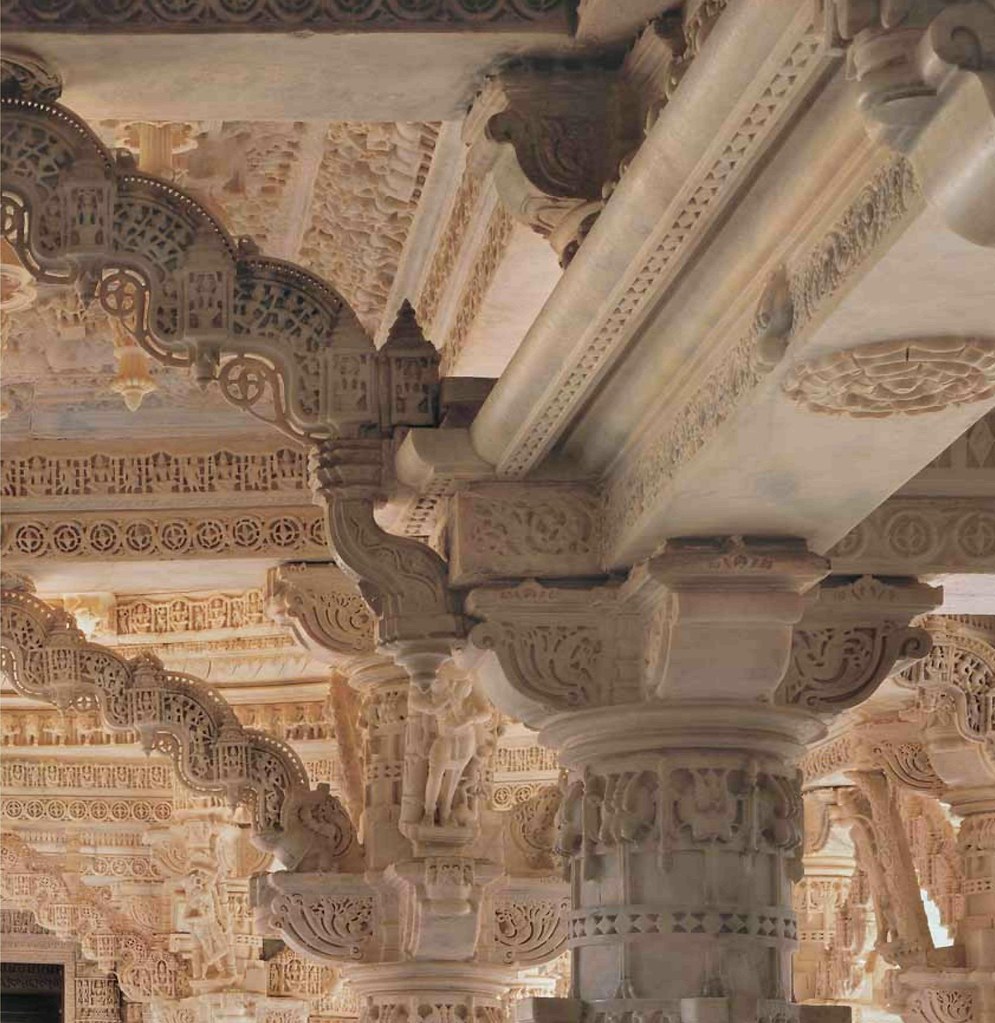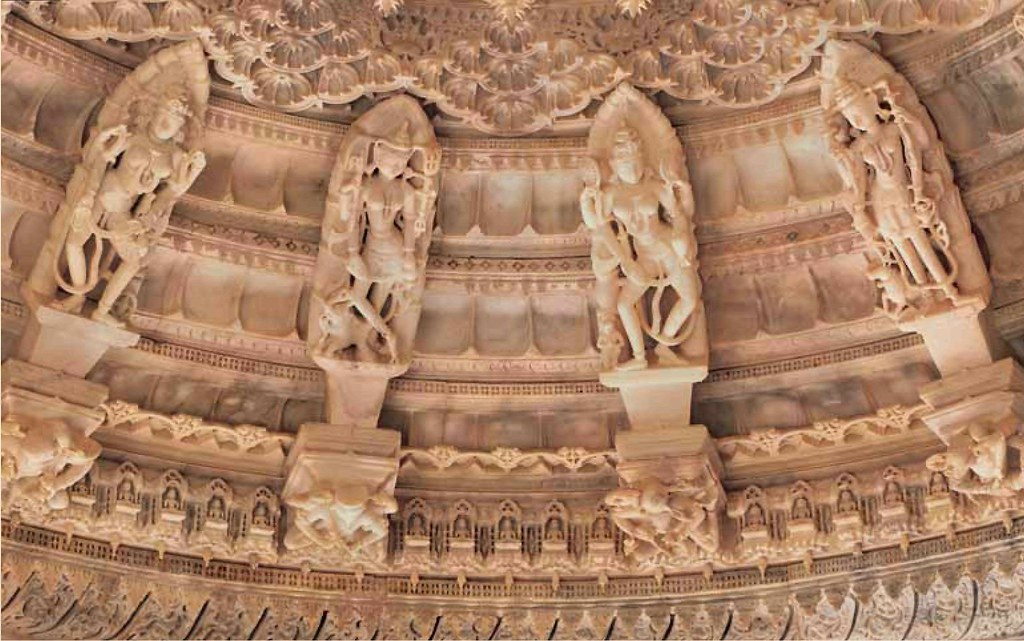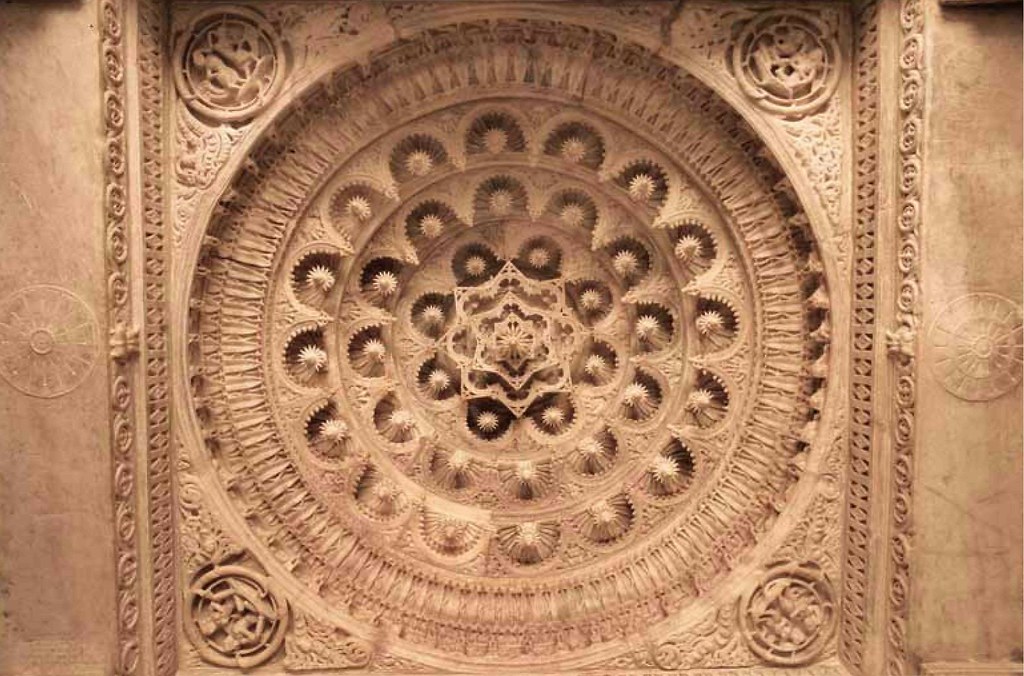MOUNT ABU
 Toranas in Luna Vasahi Temple, left
Toranas in Luna Vasahi Temple, left Toranas in Luna Vasahi Temple, right
Toranas in Luna Vasahi Temple, rightThe Dilwara temple complex at Mount Abu in the southwest of Rajasthan, close to the border of Gujarat, is one of the most important shrines of the Jains. Driving up from Abu Road, along the winding path to the plateau, the visitor finds himself transported from an arid and barren region to an altogether different world. The scenery is characterised by granite rocks, date palms, mango trees, bamboos, orchids and rose creepers. Black-faced languor’s frolic alongside the road: even bears and panthers roam free in this habitat.
 Partial view of the dome of the ranga-mandapa in Luna Vasahi Temple
Partial view of the dome of the ranga-mandapa in Luna Vasahi TempleThe Abu plateau, at an altitude of between 1.000-1.700 m, has a climate almost similar to that of the Mediterranean. In the winter, the temperature does not exceed 7°C and in summer, it does not rise beyond 32°C; the annual rainfall of approximately 1600 mm is unusual for Rajasthan and is probably responsible for the abundant vegetation. It is therefore not surprising that Mt. Abu is a favourite hill resort for Indians wanting to escape the summer heat. As such, the approximately twenty thousand inhabitants and the inordinately high number of hotels in Mt. Abu are dependent on the tourists for their livelihood. Certain places of interest such as Sunset Point or the Pearl Lake (Nakki Lake) with its Edwardian architecture as well as the summer residences of the various Maharajas attract visitors. Not only for the idyll they present but rather for the opportunity they offer to get a closer look at the colourful and exuberant Indian way of life. It is thanks to these hordes ofpeople descending on Mt. Abu that the Dilwara Temples are now open to the public only after noon; the morning is reserved for the temple service and pilgrims. Photography is strictly prohibited because in India, as anywhere else, honeymooners love to be photographed in front of historically important monuments. The trust who is responsible for the administration of the temple, believes that this would be at variance with the religious atmosphere of the shrines.
 Exquisitely elaborated ceiling in Vimala Vasahi Temple
Exquisitely elaborated ceiling in Vimala Vasahi Temple